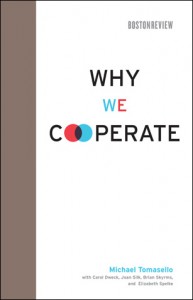The depression map: genes, culture, serotonin, and a side of pathogens. Another new science blog network (Wired) and once again a new stable of good science writers. I’m particularly pleased to see that David Dobbs, a former SciBling and top science writer, has found a new home for Neuron Culture. I was also pleased to see he had written an article on studies into the interactions between genes and culture, namely: Chiao & Blizinsky (2009) and Way & Lieberman (2010). And I was even more pleased to see that he’d mentioned both mine and Sean’s posts on the social sensitivity hypothesis. Suffice to say, I was pleased.
Take home paragraph:
In a sense, these studies are looking not at gene-x-environment interactions, or GxE, but at genes x (immediate) environment x culture — GxExC. The third variable can make all the difference. Gene-by-environment studies over the last 20 years have contributed enormously to our understanding of mood and behavior. Without them we would not have studies, like these led by Chiao and Way and Kim, that suggest broader and deeper dimensions to what makes us struggle, thrive, or just act differently in different situations. GxE is clearly important. But when we leave out variations in culture, we risk profoundly misunderstanding how these genes — and the people who carry them — actually operate in the big wide world.
The same issues are not as operative when it comes to culture. Two tribes can speak different dialects or languages. If a woman moves from one tribe to another her children don’t necessarily speak a mixture of languages, rather, they may speak the language of their fathers. The nature of cultural inheritance is more flexible, and so allows for the persistence of more heritable variation at different levels of organization. Differences of religion, language, dress, and values, can be very strong between two groups who have long lived near each other and may be genetically similar.
Homo was born vocalizing. Babel’s Dawn links to a recently finished PhD thesis that supposedly argues for a relatively recent emergence for language (approx. 120,000 years ago). She defends her assertions by stating: “[…] all of the unique cognitive traits attributed to humans arose as the consequence of one crucial mutation, which radically altered the architecture of the ancestral primate brain.” I haven’t read the thesis, and I probably won’t as I’m already stretched in regards to my reading, but I’m completely unconvinced by the hopeful mutation hypothesis. Plus, as Bolles notes in his post, there is plenty of available evidence to the contrary.
Primed for Reading. Robert Boyd reviews Stanislas Dehane’s new book, Reading in the Brain: The Science and Evolution of a Human Invention, which I’ll be picking up soon. In the meantime, to give you a bit of background, I suggest you read Dehane’s (2007) paper on the Neuronal Recycling Hypothesis: the Cultural recycling of cortical maps. H/T: Gene Expression.
Through the looking glass (part 1). The Lousy Linguist reviews Guy Deutscher’s new book, Through the Language Glass: Why the World Looks Different in Other Languages, with the general takeaway message being that, in part one at least, one where the book is a bit science-lite. What really interested me, though, were these two paragraphs:
We discover quite quickly what Deutscher is doing as he begins to walk through complexity issues of “particular areas of language” (page 109), namely morphology, phonology, and subordination. And these last 15 pages are really the gem of Part 1. He shows that there is an interesting, somewhat illogical, entirely engaging but as yet unexplained set of correlations between speaker population size and linguistic complexity.
For example, languages with small numbers of speakers tend to have more morphologically rich grammars (hence one could claim that small = more complex). However, small languages with small numbers of speakers also tend to have small phonological inventories. Hmmm, weird, right? [My emphasis]
As those of you who read this blog will know: I don’t think it’s weird that small speaker populations also tend to have small phonological inventories.
Clothing lice out of Africa. A cool new paper by Troups et al which looks at the evolutionary history of clothing lice to provide specific estimates on the origin of clothing. Using a Bayesian coalescent modelling approach, they estimate that clothing lice diverged from head louse ancestors between 83,000 and 170,000 years ago. H/T: Dienekes.




